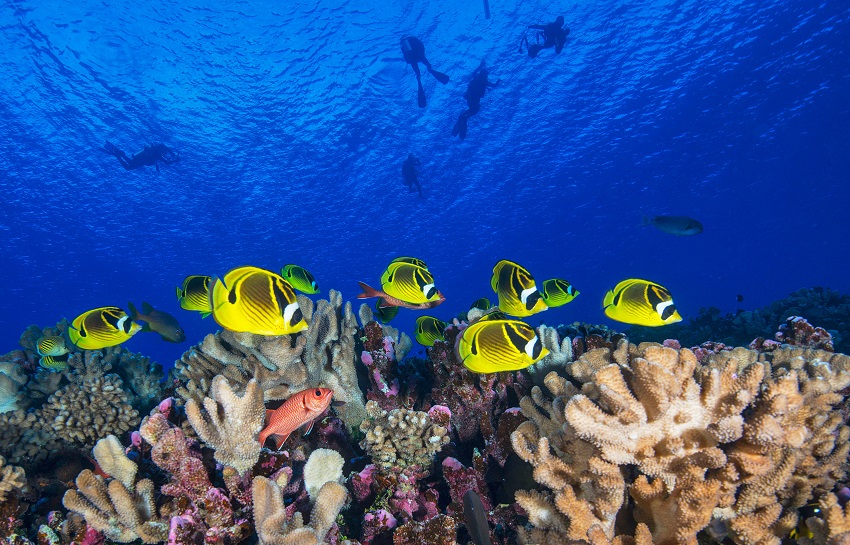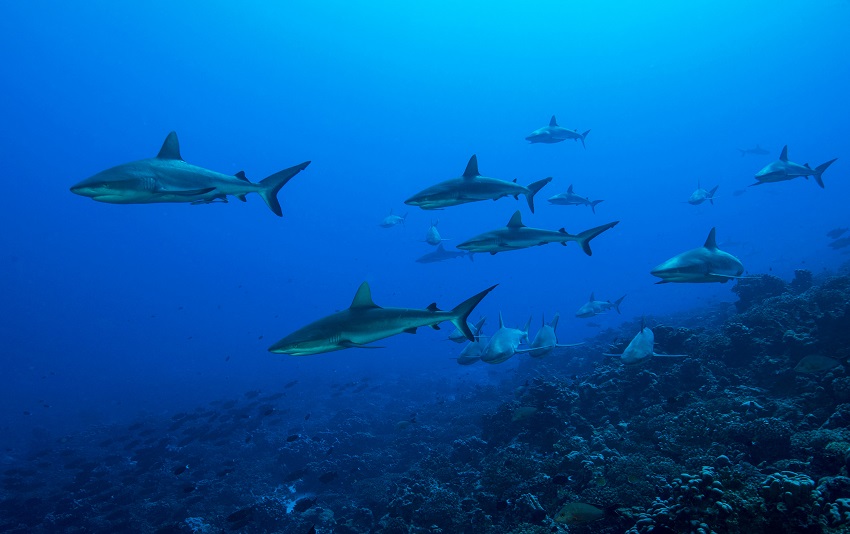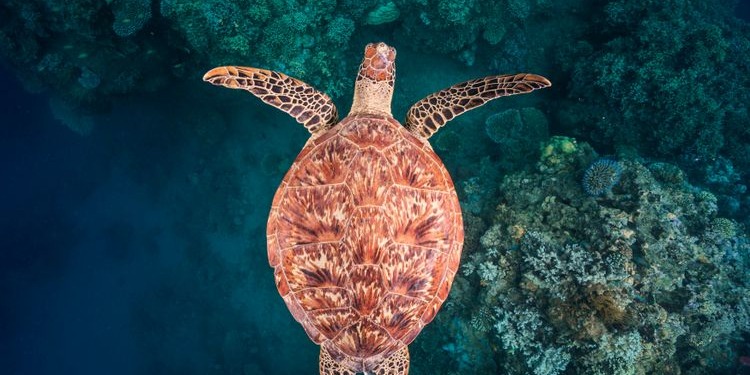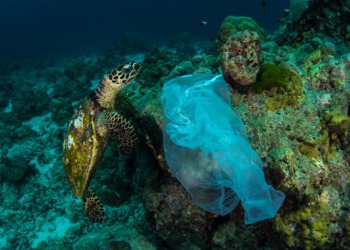In The Sea Around Us, one of the most successful books ever written about the natural world, Rachel Carson describes the inextricable link between humans, other life on the planet, and the ocean: “Fish, amphibian, and reptile, warm-blooded bird and mammal – each of us carries in our veins a salty stream in which the elements sodium, potassium, and calcium are combined in almost the same proportions as in seawater. This is our inheritance from the day, untold millions of years ago, when a remote ancestor, having progressed from one-celled to the many-celled stage, first developed a circulatory system in which the fluid was merely the water of the sea.”
Life Below Water – represented by the United Nations (UN) Sustainable Development Goal 14 – is intrinsically connected to all life on the planet because we all originate from the ocean, and continue to depend on it. Not only does it supply almost half the oxygen we breathe, while regulating our climate, powering the water cycle, and absorbing over a quarter of our carbon dioxide emissions, but it also feeds billions of people and supports our health and well-being in a myriad of ways.

Covering nearly half the Earth’s surface, the vast open-ocean and deep-sea environments of the High Seas (the entire ocean outside national jurisdictions) are ecologically vital, critically threatened, and among the least understood areas on the planet. Research has shown that the High Seas hold some of the largest reservoirs of biodiversity on Earth, support an extraordinary diversity of marine life, provide migratory routes for whales, sharks, fish, and birds, and harbour remarkable ecosystems such as deep-water corals, forests of ferns, upwellings of gigantic plankton populations, and fields of hydrothermal vents.
Yet, while the ocean gives us life and makes our planet habitable, we have been killing it – weakening it with excessive destructive fishing, exploiting it with oil and gas development, polluting it with chemicals and plastic, deafening it with interminable shipping traffic, overheating and acidifying it and, most importantly of all, failing to protect its incredible, enormous and precious diversity of life.
RELATED ARTICLES: High Seas Treaty Deep Dive: What’s the Plan to Protect the Ocean? | Giving the Ocean a ‘Fighting Chance’: UN Adopts Historic High Seas Treaty | Landmark High Seas Treaty Agreed, Ushering in New Rules for Two-Thirds of the Ocean |
We urgently need to change our relationship with the ocean, and the new High Seas Treaty offers us a historic opportunity to do so. Otherwise known as the implementing agreement to the United Nations Convention on the Law of the Sea (UNCLOS) on the conservation and sustainable use of marine biological diversity of areas beyond national jurisdiction (BBNJ), the Treaty was formally adopted by the UN and its member states on 19 June 2023. However, it needs to be signed and ratified by 60 countries to enter into force.

Once that happens, the Treaty will cohesively and legally safeguard biodiversity in the High Seas through four key elements:
- The Treaty sets out the world’s first legal framework for establishing networks of marine protected areas in the High Seas. This is fundamental to delivering the Kunming-Montreal Global Biodiversity Framework commitment to protect at least 30% of our ocean by 2030, the minimum level scientists say is critical to sustaining ocean health and resilience;
- Give the international community more transparency and a greater say in decisions regarding activities that could harm the High Seas through consistent environmental impact assessments;
- Ensure the fair and equitable sharing of benefits derived from marine genetic resources from the High Seas and seabed; and
- Enhance and build capacity and ensure the transfer of marine technology to assist countries in the implementation of the Agreement, including establishing a funding mechanism to support such activities.
The High Seas Treaty will not only benefit life below water (SDG14). It offers us a chance to help reduce inequality by giving greater and fairer access to the monetary and non-monetary benefits gained from marine genetic resources (SDG10). It also provides opportunities to maintain peace and strong institutions by creating a Conference of the Parties and committees that work together to set and enforce the rules to manage the High Seas (SDG16), develop partnerships across the many nations that are member states of the UN (SDG17), deliver climate action by better-regulating activities which diminish the ocean’s power to mitigate climate change (SDG13), reduce hunger by improving nutrient distribution for nutrient insecure nations (SDG2) and, last but not least, to improve health and wellbeing (SDG3). If countries want bang for their SDG buck, swiftly ratifying and implementing the High Seas Treaty will deliver it!
The Treaty opens for signing on 20 September at the UN General Assembly in New York. The High Seas Alliance is working with individuals, experts, organizations, and governments around the world to ensure the Treaty is ratified and implemented as soon as possible. We are aiming for at least 60 nations to have ratified by the UN Ocean Conference in France in June 2025. This is an ambitious timeline for countries to rally around so that we can start delivering the critical action we so urgently need in the water.
Join the #RaceForRatification and encourage your government to ratify the High Seas Treaty today!
Editor’s Note: The opinions expressed here by the authors are their own, not those of Impakter.com — In the Featured Photo: A sea turtle. Featured Photo Credit: Gabriel Barathieu / Ocean Image Bank.










